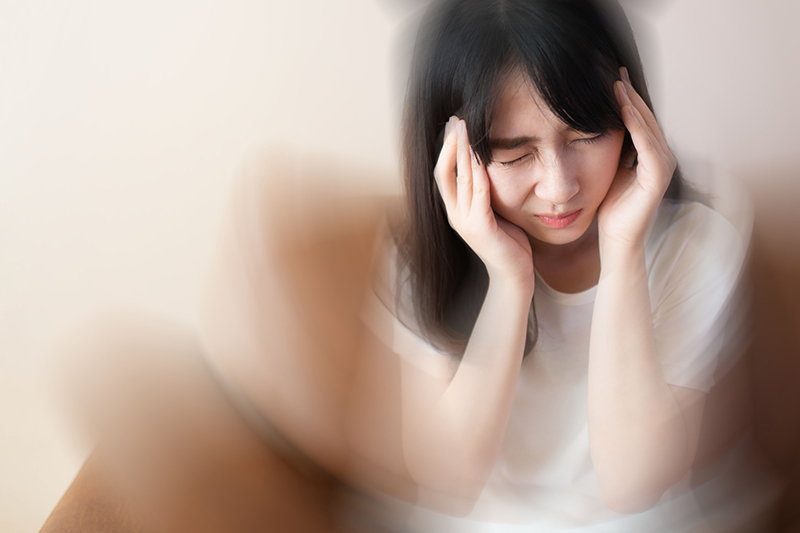Vestibular Dysfunction / Disorder
What is it?
The inner ear balance system
The inner ear balance system is a key organ for maintaining balance in the human body. The vestibular organ is composed of semicircular canals and otoliths. The semicircular canals sense the rotational movement of the head, while the otoliths sense the linear movement of the head and gravity. These organs are closely coordinated with the balance center in the brain to maintain the body’s balance and posture.
Problems with the vestibular system, in which the semicircular canals sense changes in head posture and the sacular organs that sense linear acceleration of the head and changes in gravity, may cause an imbalance in the ear fluids. Otoliths are located in the utricle and saccule, are closely related to head movement, and are an important part of the sense of balance. Balance information is transmitted to the brain via the vestibular nerve and then processed by the balance control center. This center is located in the brainstem and cerebellum and is responsible for receiving and integrating balance information from the inner ear to help the body maintain balance. When there is a problem or damage to the inner ear balance system, symptoms of ear fluid imbalance such as dizziness, shaking sensation, blurred vision, and difficulty in coordination may occur. Therefore, the proper functioning of the inner ear balance system is crucial to the balance and health of the human body.

Maintaining inner ear balance & ear water balance
Causes of vestibular dysfunction / disorder

1. Benign paroxysmal positional vertigo (BPPV):

2. Vestibular Neuritis:

3. Vestibular infarction:

4. Otolithiasis:

5. Meniere's syndrome:
Checking for ear fluid imbalance
-
1. Pure-tone Audiometry (PTA):
-
2. Auditory Brainstem Response (ABR):
-
3. Inner Ear Temperature Difference Test (Caloric Test):
-
4. Vestibular Function Assessment / Vestibular Evoked Muscle Potential (VEMP):
-
5. Cochlear Evoked Potentials (CEP):
-
6. Balance Tests:
-
7. Imaging Examinations:

This is a widely used auditory test to evaluate people's sensitivity to different sound rates. In PTA, subjects put on headphones and measure the softest sounds they can hear. PTA can assess a person's auditory health and measure any potential auditory loss.
Possible treatment for vestibular dysfunction / disorder
Medication:
Through drug treatment, the symptoms of ear fluid imbalance may be relieved to some extent. Depending on the severity of the symptoms, appropriate medications such as anti-fainting and anti-nausea medications may help relieve the symptoms of ear fluid imbalance.

Physical Therapy:
Some symptoms of ear fluid imbalance, such as benign paroxysmal positional vertigo (BPPV), can be relieved by physical therapy. Through balance and coordination exercises, such as eye movement and head rotation, balance function can be improved, and symptoms of ear water imbalance such as dizziness can also be relieved.

Maintain a Healthy Lifestyle:
Adjusting and maintaining a healthy lifestyle is very important to relieve the symptoms of ear fluid imbalance. Good eating habits, daily diet should be as light as possible, avoid eating irritating foods, and reduce sodium absorption, which can reduce the imbalance of ear fluid caused by excessive accumulation of lymph fluid in the inner ear due to excessive salt in the body. In addition, reducing the intake of alcohol, caffeine and smoking can effectively maintain inner ear health.

Maintain a Good Posture:
This can help alleviate symptoms of ear fluid imbalance, including avoiding sudden changes in head position or rapid turns. In addition, maintaining good posture in daily life and reducing the burden and tension on the neck can also help.


